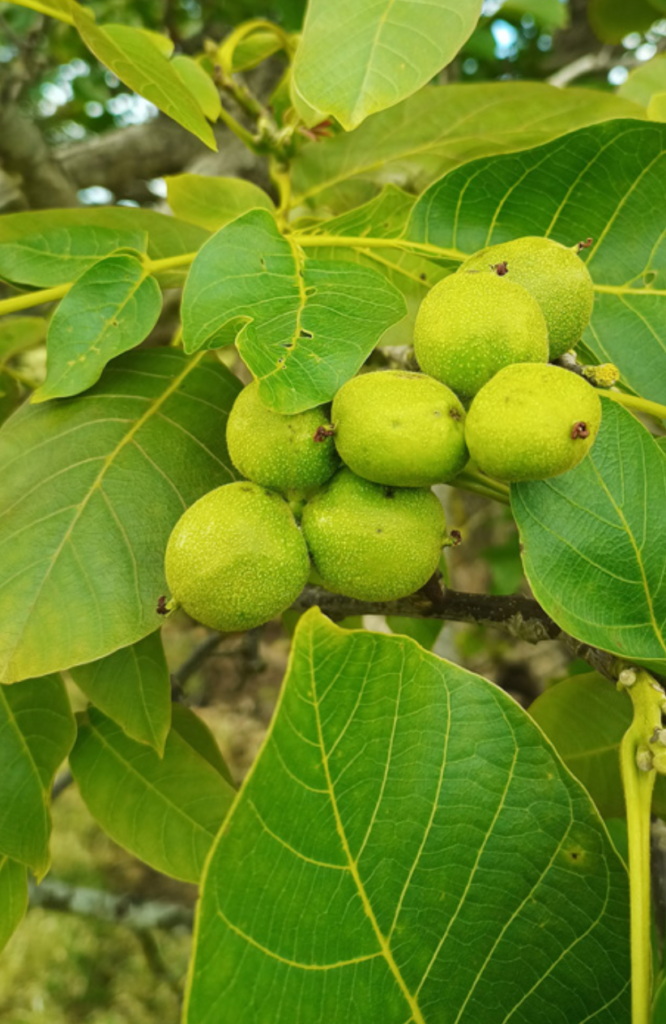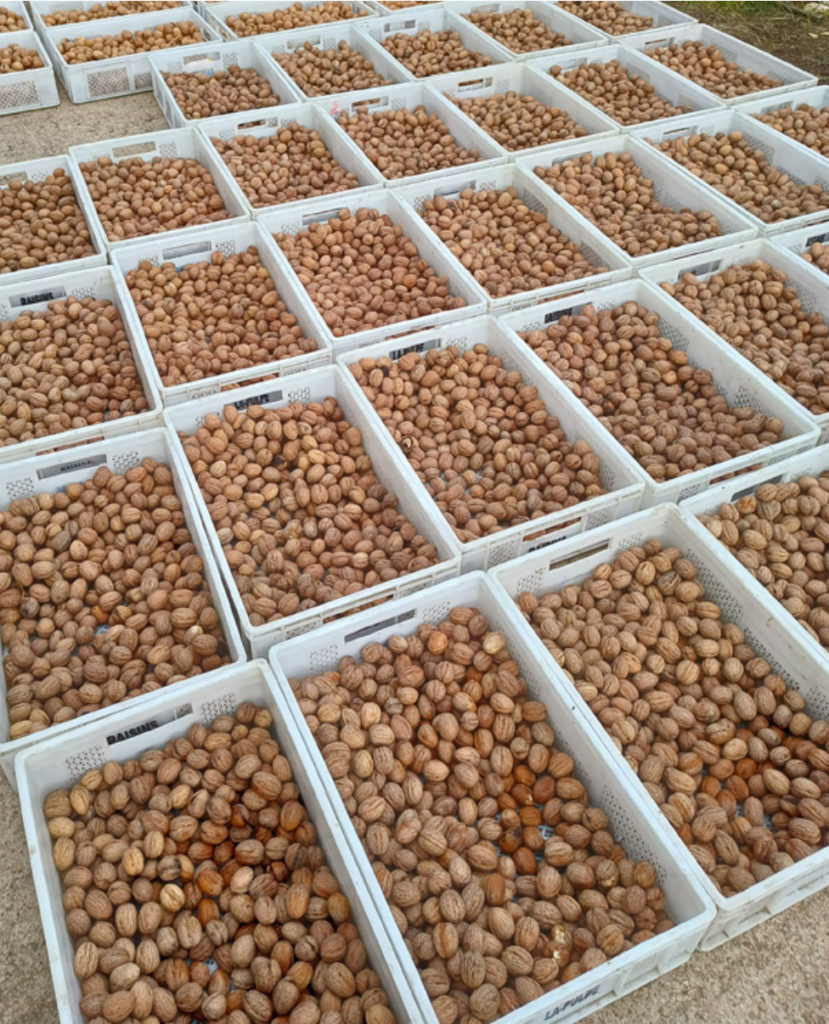“10% agroforestry land-use mandatory for every organic farm” is the call from the European Organic-PLUS and AGROMIX research projects led by Coventry University’s Centre for Agroecology, Water and Resilience (CAWR). This impact is being discussed by certification bodies and may become UK/EU organic and agroecological standard at the next ‘organic-plus’ upgrade of the Regulation.
For organic poultry, pig, dairy/sheep/goat farming this is easy, as shade is already in short supply and financial benefits of trees in terms of animal welfare are immediate and will only increase with the predicted climate crisis.
How to use agroforestry to accumulate nutrients and concentrate them for high-yielding organic crops in greenhouses and polytunnels as woodchip, peat-replacement blocking media or liquid fertilisers? And what if the tree itself is valuable? If it can provide extra fruit and nuts and eventually timber? And a lot of leaf litter and annual prunings for wood compost before. Seen like this, 10% agroforestry is not a threat rather a no-brainer and many farmers and growers might ask “why did I not plant trees 15 years ago?” Missed out on the solar panel revolution and still using nuclear or fossil energy from Putin? Better late than never, and walnut trees are one such option!
For all those reasons a full day commercial walnut training at TR Tame & Son, Shipton-on-Stour, Warwickshire was very well attended. In fact, more courses are offered and you can book here: www.warwickshirewalnuts.co.uk
Tom and David Tame grow walnut, hickory, pecan & cobnut species and have also invested in small-scale, on-farm processing and walnut oil pressing. David runs the farm day to day with Tom helping out when needed and both have their specialist areas: nut farming, tree sales, education and marketing in one brother and sheep farming and nut harvesting and processing within the other. This is important and a key success factor, as each area requires specialist knowledge and a well-oiled team is more than its parts.
It’s Latin name Juglans regia translates as ‘the royal nut of Jupiter.’ It is also called ‘Persian walnut’ and is native in south eastern Europe and all across Turkey into Iran. It is likely that walnuts were brought to Britain by the Romans, if not earlier by Greek merchants when they described their sea voyages all the way around Orkney, establishing that Britain became indeed an island unlike Norway. Therefore, walnuts are definitely pre-English and the word ‘English Walnut’ is a bit of a misnomer, it will grow very well in Scotland and Wales. Because of this heritage trees are very cold hardy (there is a lot of snow in Anatolia), but are quite susceptible to late spring frost. Therefore, a cultivar like ‘Saturn’ with bud break too early, can easily drop all its female flowers in a mid-March frost. You still get timber, shade and leaf-litter nutrients, but no nuts.
In silvo-pastoral situations like on the Tame’s farm it is important to protect the trees from sheep and deer grazing. Irrigation is equally important; Tom prefers drip-irrigation on the ground, as otherwise he would need to water trees from a bowser, at least during the first five years. At 10m x 10m spacing there is no yield loss in the grass/clover during the first 20 years, provided that the trees are pruned. At the same time, the benefits of shade and micro-climate effects increase. No weed control or fertiliser is needed, but since Tom is a conventional farmer he adds a handful of a special complex fertiliser just to 'feel better'.
As I also happen to be an organic farm inspector, I can clearly state: that this system could easily be certified organic with some minor changes and a bit of extra paperwork. However, Tom explains that he has not converted; “because in our experience there is no demand as customers just ask for English walnuts. There is no real premium in organic walnuts sold locally so costs would far outweigh any return.”

If planning this on your own farm, grafting with the right varieties, protecting trees from animals and pruning details are important. There is no need to add any fertiliser, on the contrary the aim of the tree establishment phase is to get deep roots and let the tree find its own nutrients in the soil. A pH of between 5.5-7.5 is fine, a sunny aspect and a bit of shelter from too strong winds is preferable.
There are no major pest and diseases, but watch the squirrels and prune the tree for good ventilation and sunshine reaching all part of the tree. Some cultivars are more susceptible to fungal infections, but don’t use copper, even in case it is still allowed in organic in 5 years from now, as this has been shown to inhibit the tree to use other minerals. The pest and disease picture could of course change over a 60 year lifespan of a trees, planting agroforestry widely spaced and with diverse crops will pre-empt anything what will happen when e.g. converting a conventional high density apple orchard. High-density systems are just not made for organic and are also very ugly, compared to a mature agroforestry system. If after 30 years some trees get too dense you can always take half of them out and cash in the timber for the grower’s pension.

Tom plants later flowering cultivars e.g. Lara Franquette, Broadview, Fernor, Fernette, Chandler, Kesei, Bonifac, Jupiter and Mars. There are thousands of cultivars worldwide and other nut species to try like Hickories, Heartnuts, Butternuts and Pecans. Harvest is easy with a heavy duty metal ‘nut rollers’ from the ground initially, but watch out for sheep and squirrels getting there first. 15kg for a 15 year old tree is good and up to 100 kg for a large mature tree. Once yields get too large, a tractor-mounted vacuum harvester can be used, or a self- propelled sweeper, or even a little robot in 15 years, who knows?
My overall verdict on the walnut agroforestry system is: let’s all eat more local nuts and only meat from real organic free-range and agroforestry systems – the real agromix.
Ulrich Schmutz
Professor for Organic Horticulture & Ecological Economics
Coventry University, Ryton Organic Gardens, CV8 3LG, England, UK ulrich.schmutz@coventry.ac.uk
Article published in The Organic Grower - No 64 Autumn 2023
Image Credits:
Cover: Agroforestry (silvo-pasture) with sheep and walnut trees in Warwickshire / Ulrich Schmutz
Photo 2, Photo 3: Tom Tame